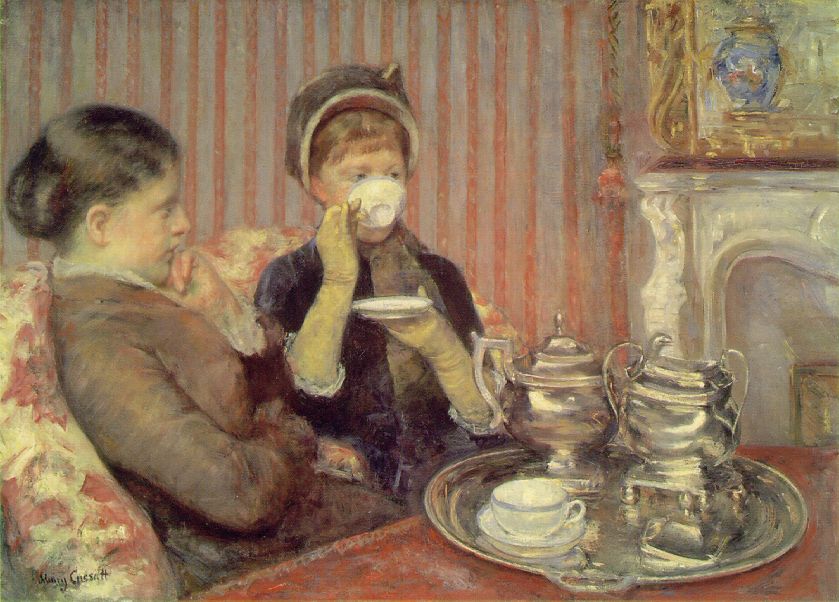 Eastern Orthodox Christianity is the most widespread religion in Russia these days, followed by Islam*, with other religions and denominations being relatively rare. Most people, however, only go to church once in a while to light a candle for someone or say a vague (though generally heartfelt) prayer, and some visitors are only somewhat spiritual, or agnostic. Whatever the visitors are, Eastern Orthodox churches have a very memorable atmosphere -- tall ceilings, frescoes of large-eyed saints, dim lighting; incense and little old ladies in headscarves holding thin beeswax candles delicately. For all my being an atheist, I've always found them beautiful and rather impressive.
Eastern Orthodox Christianity is the most widespread religion in Russia these days, followed by Islam*, with other religions and denominations being relatively rare. Most people, however, only go to church once in a while to light a candle for someone or say a vague (though generally heartfelt) prayer, and some visitors are only somewhat spiritual, or agnostic. Whatever the visitors are, Eastern Orthodox churches have a very memorable atmosphere -- tall ceilings, frescoes of large-eyed saints, dim lighting; incense and little old ladies in headscarves holding thin beeswax candles delicately. For all my being an atheist, I've always found them beautiful and rather impressive.Which made my first visit to a U.S. church (Baptist, I think) all the more shocking.
When I was young and naive (i.e. a couple of years ago), I was pestered by a then-friend into going to church with her. I should mention that I was very intimidated by religious Americans -- they go to church every single Sunday! They wear special clothes for it! They encourage their children to watch "Veggie Tales"! Who wouldn't be intimidated, really? However, I figured this was my chance to observe American culture and try to figure out what's the big deal about Going to Church. So I put on a passable dress and off we went.
To my surprise, the church did NOT have gold onion-shaped tops. If anything, it looked like a large, plain house with a bit of pointy roof at the entrance. And the inside? Very disappointing -- no candles, no incense, just a strangely enthusiastic young woman asking me to sign a membership card. Instead of a high ceiling with golden chandeliers, there was what looked like a school gym. But then came the worst shock of all -- the sermon. Instead of solemn, sing-song reading in old Russian, it consisted of the priest asking everyone to dance to a Christian rock song, then teaching us that "our god is an awesome god". Then he broke a flag in a fit of righteous anger.
No honey-smelling candles. No quiet and solitude. No depressing, dark frescoes! You Puritans! Such were my thoughts as I sat awkwardly on the edge of a foldable chair, watching my friend jump around under the fluorescent lights.
 We Russians require mystique and half-darkness, you see, like vampires. Our poetic souls cannot deal with plastic chairs and cheerfulness -- instead, we prefer marble and a nice, large line at the candle-selling counter. Lines in a church are what lets you know you are participating in a truly Russified religion -- a privilege that should probably only be accepted when you are wearing comfortable shoes. And of course, we must have incense to placate our sensitive Slavic noses and headscarves** for the women to add a nice touch of Biblical sexism.
We Russians require mystique and half-darkness, you see, like vampires. Our poetic souls cannot deal with plastic chairs and cheerfulness -- instead, we prefer marble and a nice, large line at the candle-selling counter. Lines in a church are what lets you know you are participating in a truly Russified religion -- a privilege that should probably only be accepted when you are wearing comfortable shoes. And of course, we must have incense to placate our sensitive Slavic noses and headscarves** for the women to add a nice touch of Biblical sexism.So if you are to go to Russia anytime soon, I urge you to visit an Eastern Orthodox church, even if you are not religious, and particularly if you are an artist. The slightly melancholy grandness of it is quite inspiring, and the history of a country's religion (both pagan and not) often tells you quite a bit about the country itself -- just like in much of the rest of Europe, pagan and Christian rituals in Russia mix together and their history is intertwined. Most churches in Russia are quite old -- usually at least a century or two -- and walking into one is a bit like walking into Russia's past, complete with long-skirted old ladies and woolen or flowery headscarves.
Do remember, though, that neither old nor modern Russian churches approve of people grabbing the candles and dancing with them whilst singing about how awesome their god is. Please, don't ever do that. It is much too cheerfully Post-Puritan for the somber people of Russia.
*I can't really write much about Russian mosques since I've never been in one, but if there are any Russian Muslims around, I'd love to hear about what it's like.
**For the love of god, never call a headscarf a "babushka". "Babushka" means "grandmother," and no Russian I have known has ever worn a grandmother on her/his head. I have no idea who decided that the Russian name for a headscarf is "babushka," but I would like to make them carry around mine on their head so they can tell the difference. If you really want to use the Russian name for it, call it "platok".
